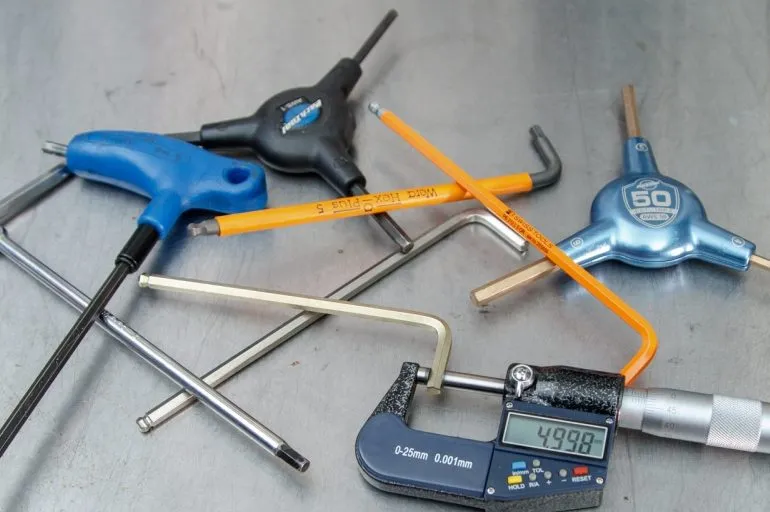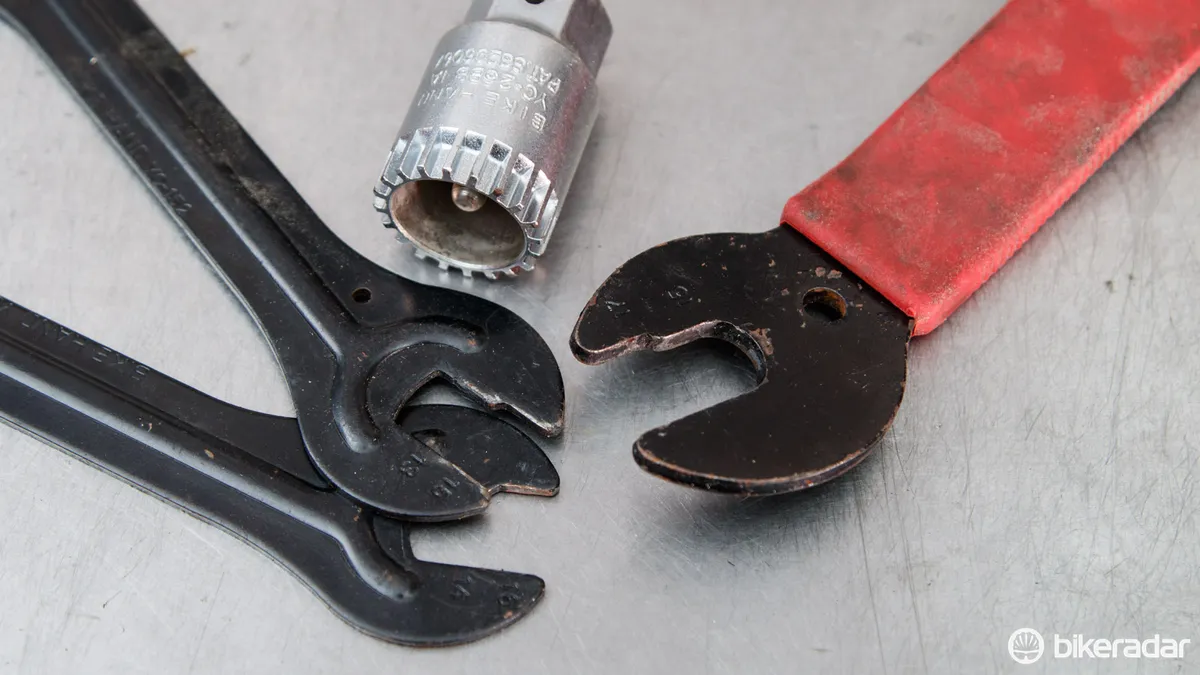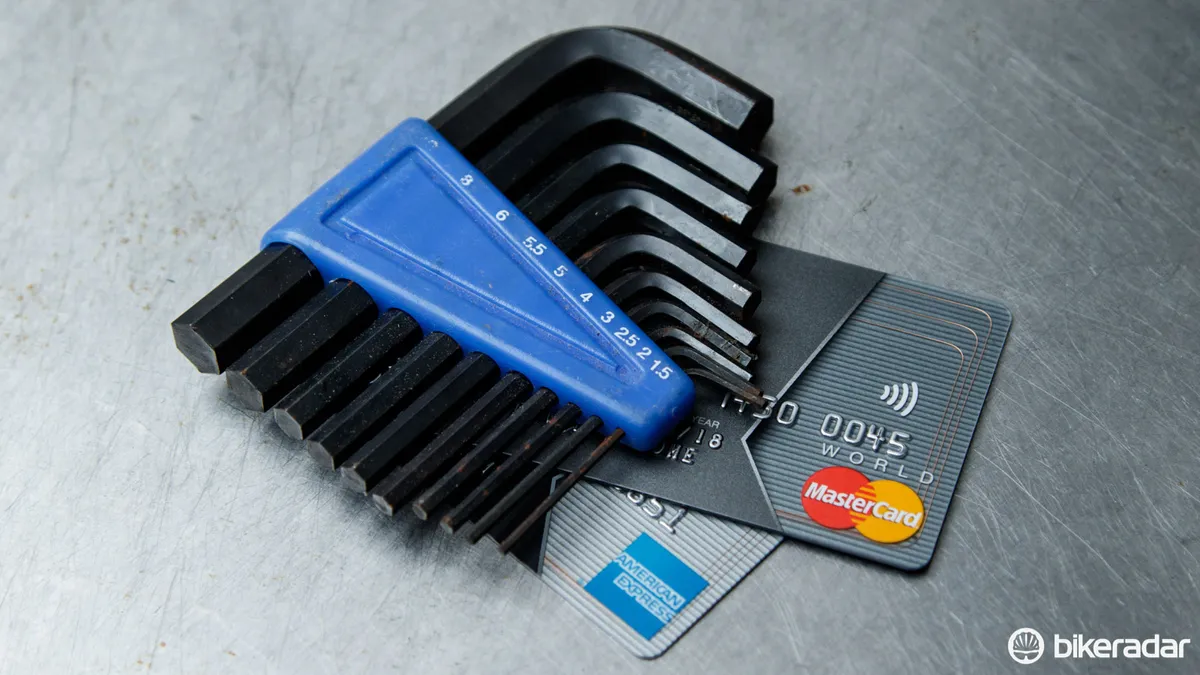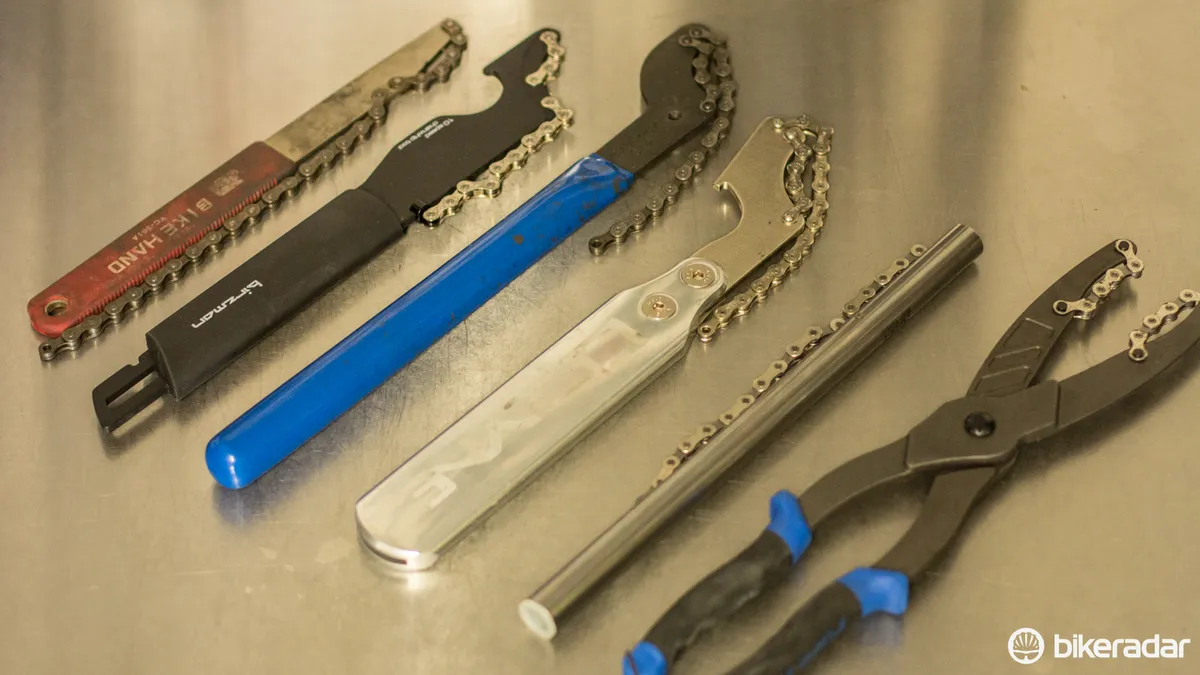Walk into a prestige car workshop and you’ll likely find high-end toolboxes filled to the brim with quality ‘trade brand’ tools. Professional mechanics rely on these tools to make an income, day in, day out. As car technology has rapidly changed, so have the tools offered.
Yet, if you walk into some bike stores (and, in all probability, if you open up your toolbox) you’ll likely find plenty of cheaper, lower grade tools that are just making do and haven’t really changed for a few decades — despite the fact that your bike certainly has. It's worth bearing in mind that high-end bikes are delicate pieces of engineering.
- Everything you ever wanted to know about cleaning your bike chain
- 6 common beginner's bike maintenance fails
- 10 reasons why your shifting sucks
- UK readers: can you help us get more people on bikes? Whether you’re a keen cyclist or a complete beginner, we’d love you to get involved in our Get Britain Riding campaign, in association with B’Twin. Click here to sign up!
Jason Quade, the man behind Abbey Bike Tools is one (but not the only) strong advocate for better tool quality in cycling. Sure, he has strong monetary motivations to make such a statement, but he’s absolutely right.
Of course, good tools in the wrong hands will almost always cause more damage than poor tools in the right hands. But I digress.
“It’s an overall quality issue," says Quade. "Nice bikes deserve nice tools — sometimes they require them. I'm sure you've seen a outboard bottom bracket that's been thrashed by a heavy hand and a poorly fitting tool.”
As Quade points out, many bolts in cycling come oversized from standards, and the tools arrive undersized. Combining these factors results in obvious fit issues.
Damage to components may very well be the user's fault, but it’s just as likely a result of poor tool design and tolerances. If you’ve ever stripped a rotor bolt, rounded a stem bolt or marred a hub cone then you’ll have felt the impotent fury this can cause.

“When I designed my pedal wrench, I went out and measured close to 100 pedals from every brand and not a single one of them had hexes that were within published specs," Quade explains. "Most of them weren't over by much, but some were off by a mile. So we pushed the size of our hex to the limit to compensate for the shoddy manufacturing of others. We did the same thing with the (cassette lockring) spline of our Crombie tool.“
Bondhus, a US-based manufacturer that specialises in hex wrenches, is another company vocal on the importance of tool tolerances and material hardness. Bondhus sells under its own brand, but also produces the hex (and Torx) tools for popular American brands such as Park Tool and Snap-On.
Lifetime warranty on a tool is nice, but it shouldn’t be used as a judge for quality
A high quality tool will keep its sharp edges and tolerances to ensure repeatable quality. Hex wrenches are the most obvious example, where cheaper options lose their edge sooner, leading to a rounded fastener (and potential for huge frustration).
Budget chain breakers (common in many generic multi-tools and tool kits) are another example that noticeably deform with each use, eventually leading to a bent pin on a new chain install.
At the other scale, make tools too hard and they can become brittle — risking dangerous snapping and fragmenting during use. It goes without saying that you don’t want this, and it’s something the better brands will test for and engineer to prevent.
Lifetime warranty on a tool is nice, but it shouldn’t be used as a judge for quality. Extended warranties are commonly used as marketing strategy, simply to add further value to a product — not necessarily to prove that it will never fail. And while the manufacturer may replace the tool, it won’t replace the failed component as a result.
Tight tolerances and durable materials come at an obvious expense. The general price of most ‘professional’ cycling tools is a clear indicator of what we’re using compared with the far higher costs associated with professional trade tools. This is not to say that most cycling tools are inherently bad, but rather that most of them are made to a price point.

For the very casual user, high tool costs are prohibitive and these soft materials may be acceptable. But in any situation, loose tolerances are inexcusable for a task-specific tool.
Take cheap cone wrenches as an example, which have the sole purpose to be thin enough to fit in between the tight gaps of hub cones. There are more than a few options too wide for common hubs — instant fail.
An actual example
For cycling, the most used tool is the 5mm hex wrench. With this, I took a wide-ranging selection of brands (most new) and measured them with a micrometer. I admit, the test is flawed in that there’s only one of each for most brands, but it does give some insight into varying tolerances.
For a 5mm hex wrench, you want it as close to 5mm as possible as the bolts are oversized to fit this. As you can see, the cheaper Chinese options are the clear losers — while the US-made and European tools are often superior.
Sample 1
Sample 2
Sample 3
Mean average
Bondhus Standard
5.014
5.002
5.007
5.008
Bondhus ProGuard
5.007
5.007
Bondhus ProGold
4.998
5.002
5.000
Park Tool (Bondhus)
5.004
4.994
4.983
4.994
Crank Brothers Multi 17
4.993
4.993
Wiha
4.988
4.988
Jet Black multi-tool
4.987
4.987
Beta
4.982
4.991
4.987
Kincrome (Tiawan)
4.986
4.986
Pedro's
4.958
5.013
4.986
Irwin Impact Bit
4.985
4.985
4.985
Topeak Mini 9
4.983
4.983
PB Swiss
4.98
4.98
Mac
4.987
4.967
4.977
Unior
4.992
4.965
4.964
4.974
Wera
4.97
4.970
PrestaCycle Bit
4.965
4.975
4.970
PRO multi tool
4.968
4.968
Generic Chinese
4.963
4.964
4.974
4.967
Birzman
4.928
4.964
4.946
Lezyne Stainless Multi
4.94
4.940
ArrayThis .06mm is just a hair's difference, but use each of the two extreme examples in the same bolt and you’ll feel an obvious change in grip and movement, and likely see the undersized version cut into the edges of the bolt before it begins to turn.
From this, you can see that Bondhus tools are an obviously brilliant choice if you’re after a snug fitting hex wrench. They also happen to be some of the cheapest available and go against the idea that more expensive is better.
Perhaps the most surprising measurement is that of the PB Swiss hex wrench. These are seen in many pros' toolboxes and are often thought of as the very best — but while they're super strong and very nice looking, they don’t, on this showing at least, fit as snugly as Bondhus items that cost ¼ as much.
Things you can do
It takes experience to know the difference between a snug fitting tool and a disaster about to happen. Unfortunately, the mechanics with least experience are probably going to be attempting a repair with the worst fitting tools. Here are a few simple tips:
- Always watch how a bolt, nut, lockring or spline is handling a high torque. If it changes feel, stop and assess. Are there signs of deformation to the tool or the bolt? If either occurs, don’t keep pushing.
- Are you using the right tool for the job? The limit screws in your Shimano derailleur aren’t actually Phillips, they’re JIS (Japanese International Standard) — that’s why they’ve always stripped (a good, sharp Phillips does work though). The chainring bolts on new XTR are T27, not the T25 you commonly use on your bike.
- If you’re continually stripping or rounding screws, it’s most likely your tools are in need of replacement or an upgrade. If the tools are fine, it’s your technique that’s the problem — be sure to push down (or ‘in’) on the tool when applying torque.
- When working with press-fit items, such as bearings and bearing cups, always take your time. It’s often easiest to do one side at a time, using the opposite face as a guide for the press. If it’s not aligned from the start, try it again — never assume it'll 'come right'.
Sadly, there’s no hard and fast rule as to what cycling tools should be avoided like the plague — and most of the blame should fall on the sloppy tolerances of the component manufacturers. Generally though, the very cheapest stuff is cheap for a reason… though one day, it may be the source of an expensive headache.



